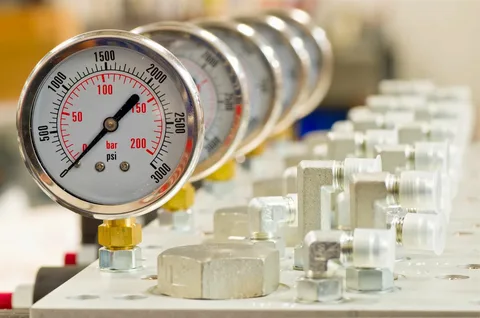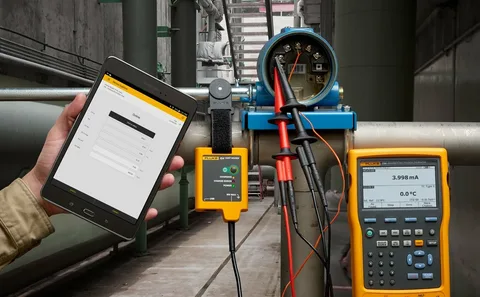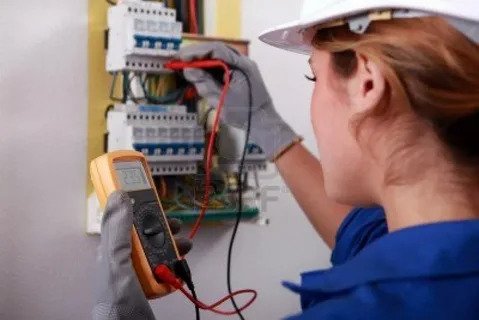
When it comes to precision, accuracy, and efficiency, Temperature Calibration Services plays a crucial role in various fields. From scientific research to manufacturing processes and even in our day-to-day cooking, precise temperature control is essential.
In this blog post, we will explore the significance of temperature calibration, the consequences of inaccurate temperature measurements, the benefits of regular calibration, common methods of calibration, and best practices for ensuring proper temperature calibration. So, let’s dive in and fine-tune our understanding of temperature calibration!
Understanding Temperature Calibration
Temperature calibration, in simple terms, is the process of adjusting a temperature measuring device to ensure its accuracy. This calibration is necessary because even the most advanced temperature measuring instruments can drift over time, leading to inaccurate readings. Precise temperature control is crucial in various fields for several reasons.
In scientific research, accurate temperature measurements are essential to obtain reliable data, reproduce experiments, and validate hypotheses. In manufacturing processes, temperature calibration ensures product quality and consistency. Even in our kitchens, getting the oven temperature right is vital for baking that perfect cake or roasting a succulent turkey.
Temperature affects accuracy, efficiency, and safety. In scientific research, a slight deviation in temperature can lead to incorrect conclusions or failed experiments. In manufacturing, inaccurate temperature control can result in damaged equipment, increased production costs, and product defects. In the culinary world, improper temperature calibration can lead to undercooked or overcooked food, affecting both taste and safety.
Importance of Accurate Temperature Measurement
The consequences of inaccurate temperature measurement can be significant. In scientific research, an experiment can fail or produce unreliable results if the temperature is not accurately controlled. This can waste precious time, effort, and resources.
In the manufacturing industry, temperature-related defects can lead to product recalls, customer dissatisfaction, and a tarnished reputation. In the food industry, improper temperature calibration can result in spoiled food, foodborne illnesses, and potential legal liabilities.

Moreover, inaccurate temperature measurements can lead to financial and time costs. Equipment repairs or replacements can be expensive, and failed experiments can set back research projects. In the manufacturing industry, defective products can result in monetary losses due to recalls, rework, or customer returns. In the culinary world, ruined meals can be a waste of ingredients and time.
Real-life examples illustrate the impact of accurate temperature measurement. In the pharmaceutical industry, a slight deviation in temperature during the manufacturing process of a drug can render it ineffective or even dangerous.
In the automotive industry, improper temperature calibration in the paint shop can lead to paint defects, affecting the final product’s quality. In the food industry, failing to maintain the right temperature during food transportation can result in spoilage and waste.
Benefits of Temperature Calibration
Regular temperature calibration brings numerous benefits. First and foremost, it enhances equipment performance and longevity. By calibrating temperature measuring devices, we ensure that they provide accurate readings, allowing us to make informed decisions and take appropriate actions. It also helps detect any drift or malfunction in the measuring instruments, enabling timely maintenance or replacement.
Calibration ensures consistent results and reliable data. In scientific research, experiments can be reproduced successfully when the temperature is precisely controlled. This allows scientists to validate their findings and build upon previous work. In manufacturing, temperature calibration helps maintain product consistency, enabling companies to meet quality standards and customer expectations consistently.
Temperature calibration contributes to quality control and compliance with industry standards. In several industries, adherence to specific temperature ranges is essential to meet regulatory requirements. For example, in the pharmaceutical industry, temperature-controlled storage and transportation are vital to maintain drug efficacy. Calibration ensures that the temperature control systems are accurate and reliable, meeting these stringent standards.
Common Methods of Temperature Calibration
Several methods are used for temperature calibration. One common technique is comparison calibration, where the instrument under test is compared to a known reference standard.
This method is suitable for most temperature measuring devices and is relatively straightforward to perform. Another method is fixed-point calibration, where the instrument is calibrated against the melting or boiling point of a substance with a well-defined temperature. This method is more accurate but requires specialized equipment and expertise.
When choosing a calibration method, specific requirements and equipment types must be considered. For general temperature measuring devices, comparison calibration is often sufficient. However, for highly sensitive instruments or applications requiring high accuracy, fixed-point calibration may be necessary. It is essential to consult calibration standards or seek expert advice to determine the most appropriate method for your specific needs.
Conclusion:
Temperature calibration is not just a technicality but a vital aspect of achieving accurate results, ensuring product quality, and maintaining safety in various fields. From scientific research to manufacturing processes and culinary endeavors, precise temperature control is critical. The consequences of inaccurate temperature measurements can be costly, both financially and in terms of time, and can lead to failed experiments, damaged equipment, and spoiled food.
Remember, temperature calibration is not only about numbers; it is about achieving perfection in every scientific experiment, every manufacturing process, and every meal. So, let’s fine-tune our heat and unlock the full potential of accurate temperature control!






